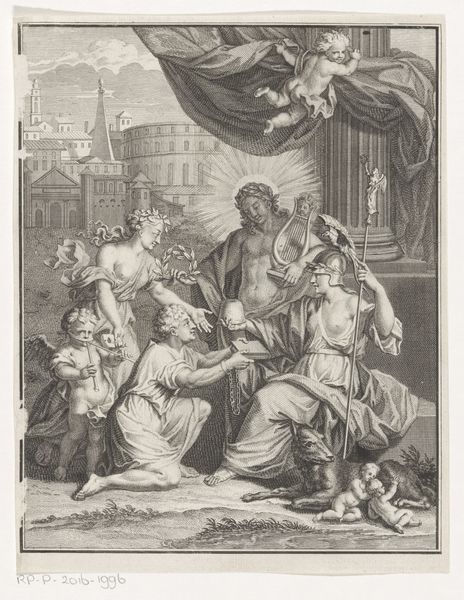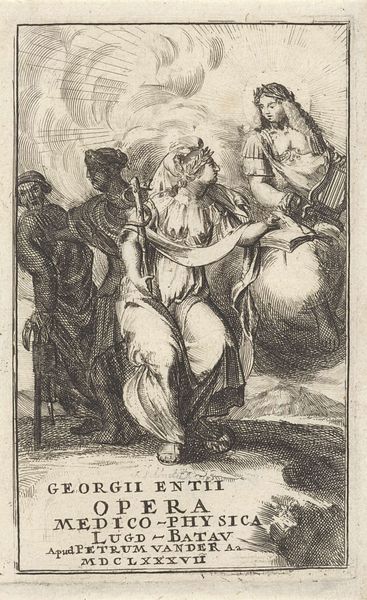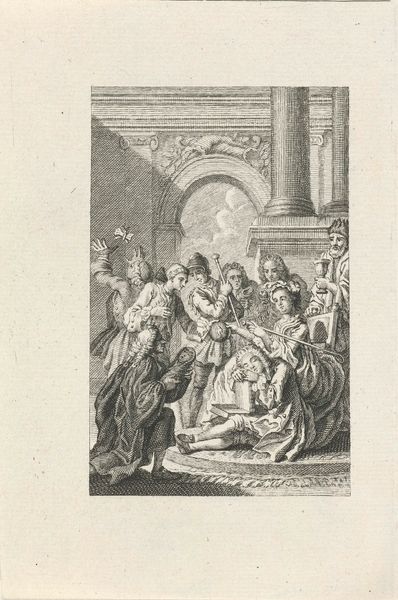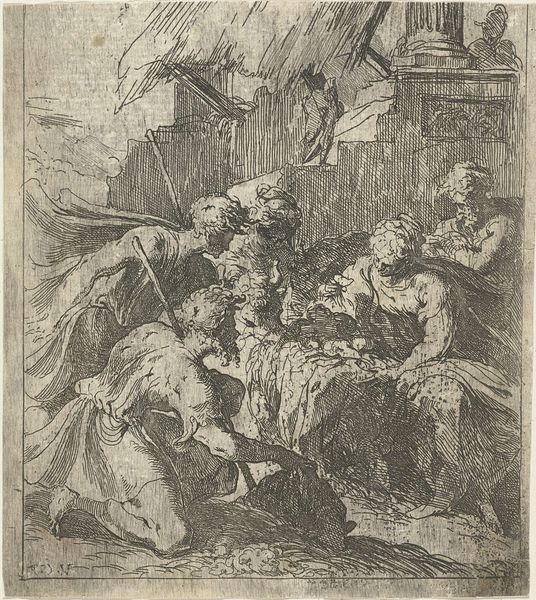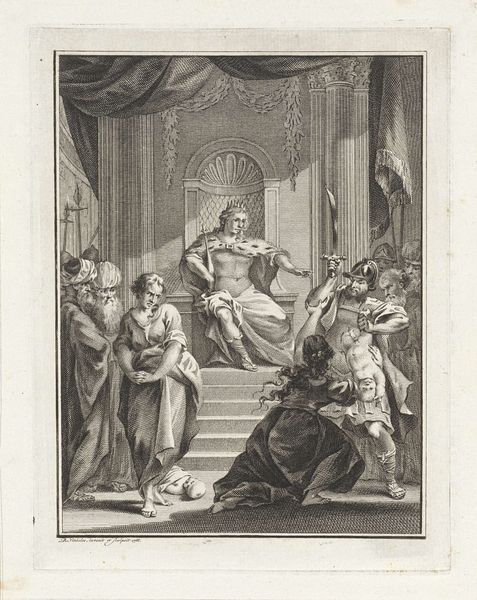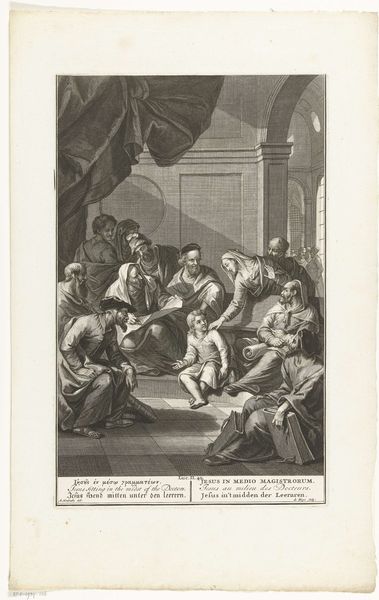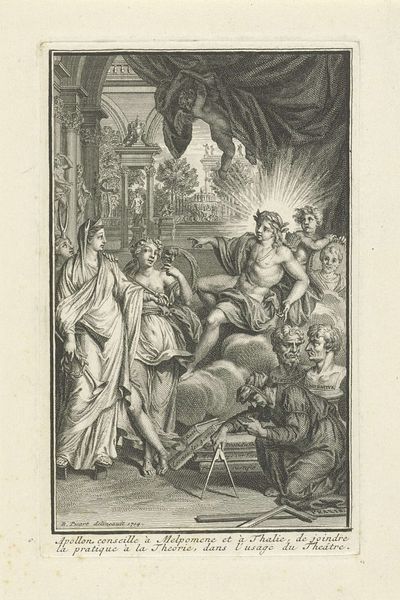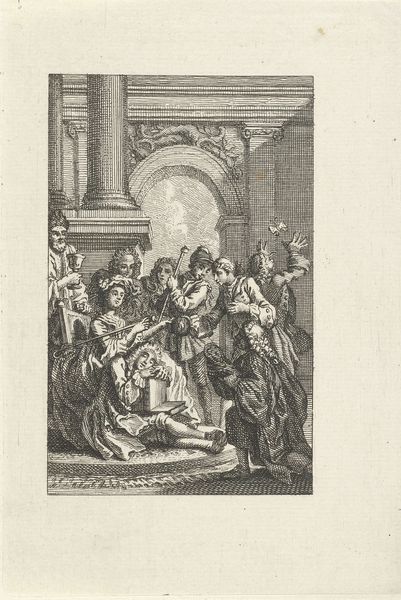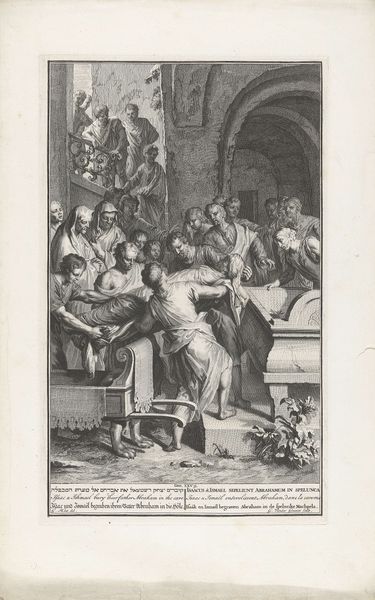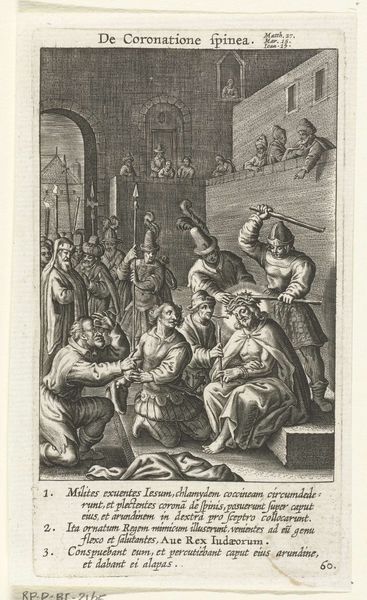
intaglio, engraving
#
allegory
#
baroque
#
intaglio
#
old engraving style
#
history-painting
#
engraving
Dimensions: height 142 mm, width 87 mm
Copyright: Rijks Museum: Open Domain
Editor: We're looking at "Apollo lauwert Terentius," an engraving by Bernard Picart from 1716. The detail is incredible for such a small piece. It's busy, almost theatrical. I’m curious about how all these figures interact. What do you see in this work, and what story do you think it is telling? Curator: Ah, Picart. He had a way of packing universes into single images! To me, it’s a Baroque ballet frozen in ink. Note how Terence, a former slave, is being presented, not just to the Roman Republic, but really to posterity. The freed slave receives laurel wreath from Apollo as a celebration of talent, so history will always repeat itself; that it’s circular. The angel floating above just is just such an amazing idea to add on. He wanted his voice to resound, across time, through art. I feel that, I almost hear the trumpets now! Editor: It's fascinating to see history and mythology blended together. So the classical architecture in the background and Apollo… that gives it context. But how does that fit with the freed slave narrative? Curator: Exactly! It's the Baroque love of grand narratives and the layering of meaning. Apollo and the architecture connect Terence to this glorious, idealized past of intellectual and artistic achievement, an aspiration now within reach, maybe. What do you think all the smaller figures do? Are those cupids? Editor: Now that I am looking at them...Perhaps symbols of inspiration and playfulness within the theatre, contributing to the atmosphere of performance? It feels like the start of a beautiful composition to make that clear to the audience. Thanks for walking me through the many facets of this composition. Curator: Indeed, there’s something wonderfully subversive in his visual language isn't there? Glad to see how it unfolds to the mind in more interesting shapes.
Comments
No comments
Be the first to comment and join the conversation on the ultimate creative platform.
